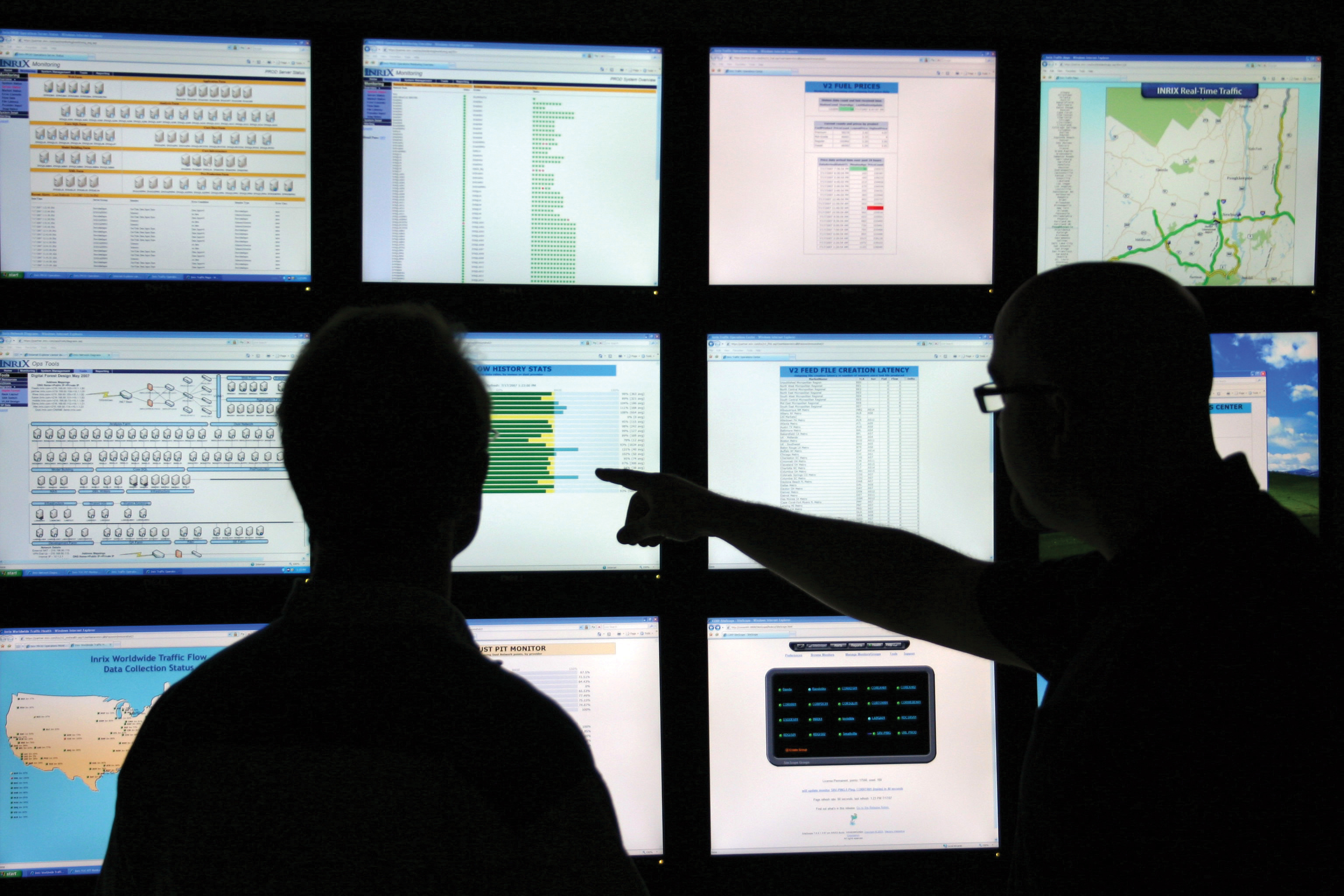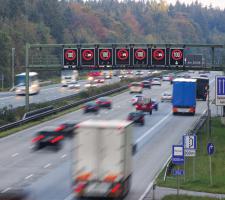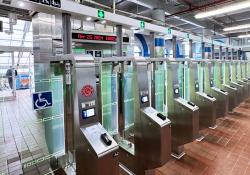
In terms of travel information, traffic control centres need to think internationally
Pan-European, multi-modal traffic and travel information is now available, for drivers willing to pay for it. Jon Masters reports.
Those able to afford a new car with all the latest options including internet connectivity can now look forward to getting detailed up-to-the-minute traffic information. They can also access multi-modal travel data, such as train times, plus weather forecasts and parking availability. Take the connected car to any Western European country and the system still works with live local information in the owner’s native language.
Connectivity sells and it is selling more widely, due in part to the TPEG protocol (named after the Transport Protocol Experts Group) for delivering data which has helped create the open, standardised and competitive market the OEMs need. This allows them to source traffic information from a single supplier using a non-proprietary system of communication. Additionally, the services based on the TPEG protocol are generally very useful; data has become more accurate and a lot more of it can be carried in different ways, by digital radio or Wi-Fi internet connection for instance. The predecessor to TPEG, the RDS-TMC (radio data system – traffic message channel) system – more of a method than a protocol – is still being used to provide useful information on incidents for navigation systems. But it is services developing to TPEG standards that represent the cutting-edge. TPEG’s promotion of pan-European and cross-border information is significant; helping overcome a long - recognised deficiency of traditional nationally-focused travel information.
“These services are needed because we have a common EU market and a European road system. If a driver wants to travel from Belgium to the Netherlands then he or she needs the travel information of both countries and we now have a lot of HGV traffic coming from Eastern Europe and travelling through Scandinavia and the Alps. It no longer makes sense to start with a national solution that is not based on a pan-European approach,” Kusche says.
“From a technical perspective we have opportunity to make use of highly beneficial safety information, but it has to be compatible with that of others. At WDR we have strong national and regional competence, but this has to be based on global technology.”
With around 13 years’ experience of providing RDS-TMC data to German traffic control centres and now serving an estimated 30 million receivers of its radio and RDS-TMC services, WDR is one of the European market’s largest operators. It provides services across Germany’s borders and receives similar data from neighbouring countries such as Switzerland.
However the German broadcaster is one of only a small number of suppliers holding TISA accreditation for a TPEG service.
TMC-equipped navigation equipment. In practice though, RDS-TMC has tended to focus on national traffic information.
The five basic items of information provided by RDS-TMC – event description, location, extent, expected duration and diversion advice – are restricted to a basic set of predetermined phrases. Furthermore, all terminal decoders have to have a location database to interpret every message received. This data has to be kept updated through some form of subscription arrangement between the supplier and customer.
Locations can only be given accurately to the nearest points of reference, such as between two motorway junctions. The system is effectively limited to inter-urban road events and is only as good as the location database held by each user.
The TPEG protocol has been developed as a platform for multi-modal traffic and transport information, and lots of it. TPEG technology includes geo-referencing so can give detailed location data with every message. It is modular and scalable for relatively simple or more complex services and TPEG also allows unidirectional transmissions, so providing the platform for emergency services such as the European e-Call system.
“There is now a specification for safety related traffic information passing through the European Parliament, defining the quality, accuracy, response time and other standards, but the EC hasn’t given much thought to what’s required technically, just what’s desirable from a political perspective,” Kusche says. “This will become TPEG. TMC is adequate in the interim, but it’s not enough. TPEG is more precise. It’s a very powerful tool and allows for services to be expanded as it’s multi-layered.
“Business cases for public traffic information services will be down to the broadcaster. There would certainly be a reaction if WDR was to stop its cross-border service.”
There are already commercial services between service providers and OEMs, “but it’s an open secret many drivers are not interested in paying a regular premium on top of the cost of a new car and not everyone has a satnav system,” Kusche says. “So there has to be a free to air service.
“What’s needed is some new definitions of standard and premium services, to define information for public safety. All cars should receive the same safety critical information and there is certainly a need for premium services that respond to the individual needs of drivers.”
At least one of the leading European OEMs is offering a menu of different media packages. The starting price is about €1,100 ($1,500), which buys the technology and the connected services for three years. Thereafter, subscription charges apply for all but the car’s emergency call function. The chair of TISA’s technical committee is Dave Francis, who is also the technical director of broadcast technologies for163 Inrix, which supplies six of the eight OEMs in Europe, a number of them with pan-European services based on the TPEG protocol. He says: “There are costs associated with sending data and with TPEG services we can send huge amounts of it, but OEMs are able to negotiate cost reductions and between them they have huge buying power.” Prices for vehicle connectivity should also come down as it becomes more widespread. It started in top-end cars but has filtered down and is now available as an option in all models of some OEMs, Francis says. The automotive market is also benefiting from better value from its su
pply chain.
“The automotive market has certainly benefited from the advent of TPEG services,” Francis says. “It is the standardised way of buying the same thing across Europe that they have been seeking. It means OEMs can change suppliers more easily, which on one hand may not be so good for us, but it maintains healthy competition. We compete on quality, content and coverage now.”
It would seem most, if not all, OEMs are putting vehicle connectivity at the heart of their infotainment strategies, as eCall and similar emergency services will rely on it. Francis says: “The downside of broadcast has been that DAB is not worldwide and it’s still not pan-European, but a service connected via GPS or Wi-Fi can be set up virtually anywhere and it has been taking off. The two-way communication and accuracy of connected TPEG services allows us to send much richer data tailored specifically to each car, to keep track of the data sent and to regularly update it with other information such as parking advice and weather forecasts as well.
“We still have more to do with the speed of data delivery, and connectivity does not reach everywhere. There is no 3G or even GSM signal in some parts of the UK, but coverage is getting better and we’re working on a continuous process of improvement.”
Issues of cost and connectivity are likely to remain at least as long as it takes for services and coverage to reach maturity. “Hybrid systems are likely in future,” says Thomas Kusche. “2125 Audi has a clever approach, using DAB to send the most important data to satnav systems and individual information requested by drivers via the internet.”
Those able to afford a new car with all the latest options including internet connectivity can now look forward to getting detailed up-to-the-minute traffic information. They can also access multi-modal travel data, such as train times, plus weather forecasts and parking availability. Take the connected car to any Western European country and the system still works with live local information in the owner’s native language.
Connectivity sells and it is selling more widely, due in part to the TPEG protocol (named after the Transport Protocol Experts Group) for delivering data which has helped create the open, standardised and competitive market the OEMs need. This allows them to source traffic information from a single supplier using a non-proprietary system of communication. Additionally, the services based on the TPEG protocol are generally very useful; data has become more accurate and a lot more of it can be carried in different ways, by digital radio or Wi-Fi internet connection for instance. The predecessor to TPEG, the RDS-TMC (radio data system – traffic message channel) system – more of a method than a protocol – is still being used to provide useful information on incidents for navigation systems. But it is services developing to TPEG standards that represent the cutting-edge. TPEG’s promotion of pan-European and cross-border information is significant; helping overcome a long - recognised deficiency of traditional nationally-focused travel information.
European demand
Thomas Kusche is a senior editor for the German broadcaster WDR. He is also currently president of the Travel Information Services Association (TISA), which has oversight of the RDS-TMC system and TPEG specifications, maintaining a registry of validated TPEG operations.“These services are needed because we have a common EU market and a European road system. If a driver wants to travel from Belgium to the Netherlands then he or she needs the travel information of both countries and we now have a lot of HGV traffic coming from Eastern Europe and travelling through Scandinavia and the Alps. It no longer makes sense to start with a national solution that is not based on a pan-European approach,” Kusche says.
“From a technical perspective we have opportunity to make use of highly beneficial safety information, but it has to be compatible with that of others. At WDR we have strong national and regional competence, but this has to be based on global technology.”
With around 13 years’ experience of providing RDS-TMC data to German traffic control centres and now serving an estimated 30 million receivers of its radio and RDS-TMC services, WDR is one of the European market’s largest operators. It provides services across Germany’s borders and receives similar data from neighbouring countries such as Switzerland.
However the German broadcaster is one of only a small number of suppliers holding TISA accreditation for a TPEG service.
Multi-layered platform
RDS-TMC transmissions on FM radio are theoretically pan-European, or cross-border at least. They use a standardised system of coded messages, which are decoded in the user’s own language byTMC-equipped navigation equipment. In practice though, RDS-TMC has tended to focus on national traffic information.
The five basic items of information provided by RDS-TMC – event description, location, extent, expected duration and diversion advice – are restricted to a basic set of predetermined phrases. Furthermore, all terminal decoders have to have a location database to interpret every message received. This data has to be kept updated through some form of subscription arrangement between the supplier and customer.
Locations can only be given accurately to the nearest points of reference, such as between two motorway junctions. The system is effectively limited to inter-urban road events and is only as good as the location database held by each user.
The TPEG protocol has been developed as a platform for multi-modal traffic and transport information, and lots of it. TPEG technology includes geo-referencing so can give detailed location data with every message. It is modular and scalable for relatively simple or more complex services and TPEG also allows unidirectional transmissions, so providing the platform for emergency services such as the European e-Call system.
Political dimensions
This adds a public service element to the multi-layered nature of the TPEG approach, and so a political dimension, to how services are applied. According to Kusche, European legislation presents a challenge because there is currently a lack of definition of how safety related services should be delivered.“There is now a specification for safety related traffic information passing through the European Parliament, defining the quality, accuracy, response time and other standards, but the EC hasn’t given much thought to what’s required technically, just what’s desirable from a political perspective,” Kusche says. “This will become TPEG. TMC is adequate in the interim, but it’s not enough. TPEG is more precise. It’s a very powerful tool and allows for services to be expanded as it’s multi-layered.
“Business cases for public traffic information services will be down to the broadcaster. There would certainly be a reaction if WDR was to stop its cross-border service.”
There are already commercial services between service providers and OEMs, “but it’s an open secret many drivers are not interested in paying a regular premium on top of the cost of a new car and not everyone has a satnav system,” Kusche says. “So there has to be a free to air service.
“What’s needed is some new definitions of standard and premium services, to define information for public safety. All cars should receive the same safety critical information and there is certainly a need for premium services that respond to the individual needs of drivers.”
Better value
So far these top-end services have reached only a limited number of vehicles but virtually all leading OEMs have introduced live traffic news and navigation updates as optional extras or standard items on top-end models. Some have a built-in SIM card for emergency and additional services. Others’ infotainment systems connect with the internet via the driver’s smartphone.At least one of the leading European OEMs is offering a menu of different media packages. The starting price is about €1,100 ($1,500), which buys the technology and the connected services for three years. Thereafter, subscription charges apply for all but the car’s emergency call function. The chair of TISA’s technical committee is Dave Francis, who is also the technical director of broadcast technologies for
pply chain.
“The automotive market has certainly benefited from the advent of TPEG services,” Francis says. “It is the standardised way of buying the same thing across Europe that they have been seeking. It means OEMs can change suppliers more easily, which on one hand may not be so good for us, but it maintains healthy competition. We compete on quality, content and coverage now.”
It would seem most, if not all, OEMs are putting vehicle connectivity at the heart of their infotainment strategies, as eCall and similar emergency services will rely on it. Francis says: “The downside of broadcast has been that DAB is not worldwide and it’s still not pan-European, but a service connected via GPS or Wi-Fi can be set up virtually anywhere and it has been taking off. The two-way communication and accuracy of connected TPEG services allows us to send much richer data tailored specifically to each car, to keep track of the data sent and to regularly update it with other information such as parking advice and weather forecasts as well.
“We still have more to do with the speed of data delivery, and connectivity does not reach everywhere. There is no 3G or even GSM signal in some parts of the UK, but coverage is getting better and we’re working on a continuous process of improvement.”
Issues of cost and connectivity are likely to remain at least as long as it takes for services and coverage to reach maturity. “Hybrid systems are likely in future,” says Thomas Kusche. “












